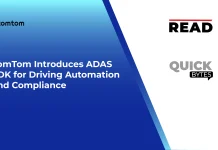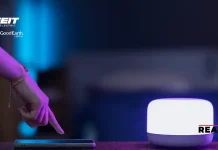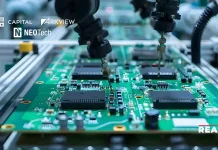Technological advancements have led to considerable changes in the food & beverage industry in recent years. Food production, preparation, and delivery have all improved in accuracy, efficiency, and sustainability because of technological advancements.
Automation, artificial intelligence (AI), and the Internet of Things (IoT) are all being used widely by businesses, and this trend is anticipated to continue in the years to come. Food and beverage businesses can enhance customer experience, cut costs, and improve service by digitalizing their processes.
With this in mind, let’s examine the different ways that technology is changing the food & beverage industry, exploring both the advantages of these developments and any potential drawbacks.
How has the Advent of Technology Impacted the F&B Industry?
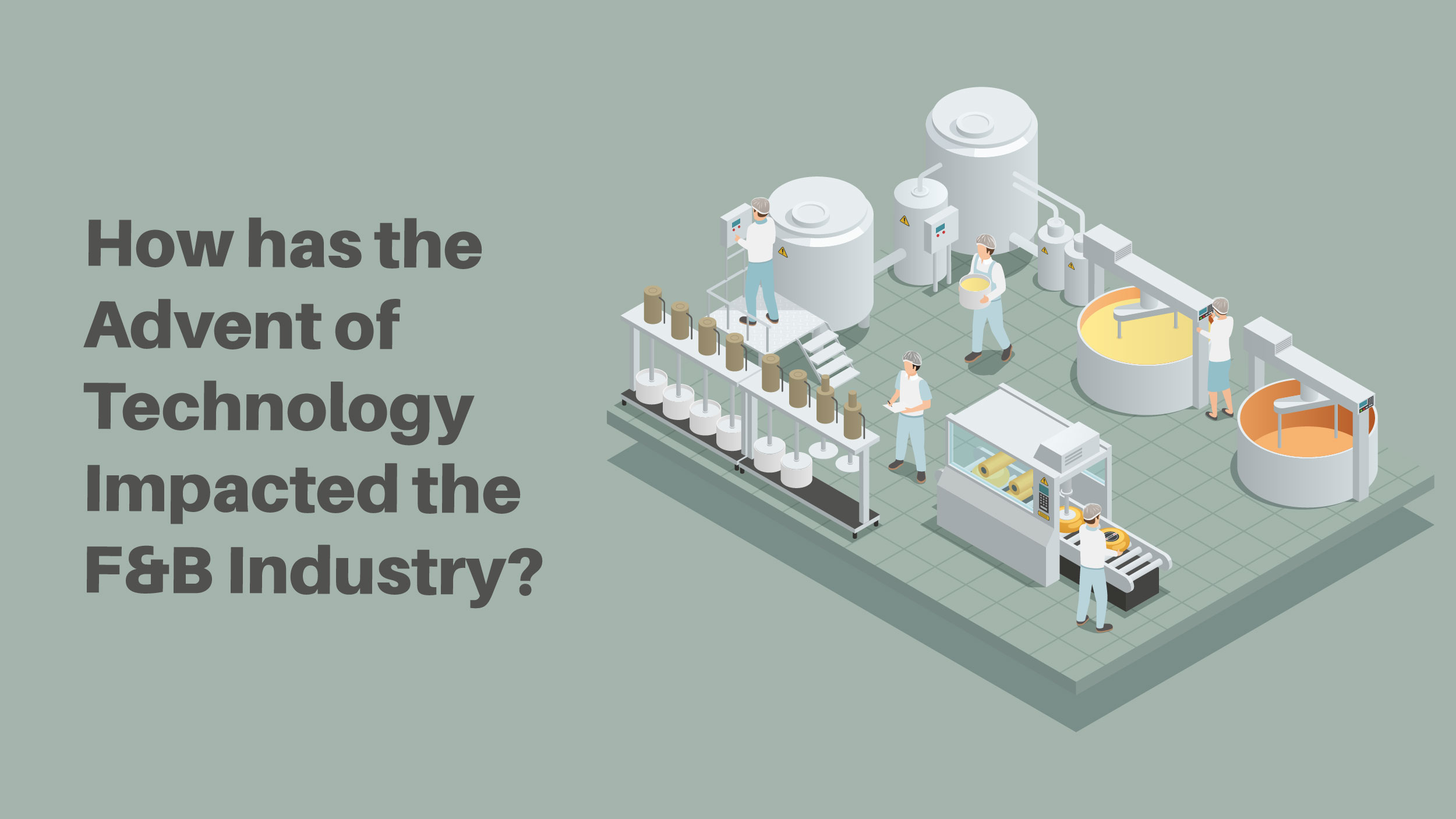
Technology’s emergence has caused the F&B (food and beverage) industry to evolve quickly. Food delivery has become more enticing because to user-friendly apps and driver services that are tech-enabled, which has spurred the sector’s incredible expansion.
Recent years, especially the onset of the COVID-19 pandemic, have seen a push for F&B production facilities to adopt Industry 4.0 due to consumer trends toward healthier, more sustainable meals, stricter food safety regulations, and an increase in smaller, more individualized production.
According to Aptean, 73% of F&B companies have maintained or increased their digital technology investments, with supply chain operations (51%), data obtaining (38%), and improved business analytics (37%) being the most common use cases.
It is possible to improve the shelf life and safety of food by simply employing technology to streamline the processing and packaging pipelines of the industry.
3 Proven Ways to Transform F&B Sector
Here are 3 prominent ways increased technological deployment is altering the F&B realm:
I. Stringent Food Safety Standards
Every year, an estimated 420 000 individuals worldwide pass away after consuming contaminated food, and children under 5 account for 40% of these deaths. F&B companies need to boost their safety standards in light of rising demands for sustainable, green manufacturing. To address food safety concerns, below are some ways digital technologies are being adopted in production pipelines:
- Cleaning-in-place (CIP) systems monitor bacteria levels and increase the reliability of cleaning regimens.
- Improved supply chain visibility, along with Industrial Internet of Things (IIoT) temperature sensors, helps preserve perishable foods and raw materials at proper temperatures to ensure longer shelf life.
- Robotic process automation (RPA) helps improve quality control and eliminate human errors that could lead to food contamination during production.
II. Creating Manufacturing Pipelines
Several industry leaders employ demand forecasting, production scheduling, process configuration, maintenance planning, inventory management, supply chain organization, and fulfillment today using an integrated, automated system.
After the COVID-19 outbreak, F&B facilities have embraced technologies that allow staff to work from home like other industries while production continues unaffected, such as:
- Project management and communication tools in the cloud
- Machine learning (ML) and big data for predictive maintenance
- IoT devices, edge computing, and augmented reality (AR) to support digital twins and RPA on the factory floor
III. Robotic Revolution and Automation
In the food industry, the employment of robots provides quality and is an economical choice. Utilizing machines helps minimize the cost of keeping food fresh and bolsters output.
The food packaging industry has gained major benefits from the integration of robotics and automation into processes.
Robots are considered to be responsible for a greater percentage of package production. They have significantly outperformed human manufacturing efficiency and skills because of their enhanced automation capabilities.
Moreover, industry experts opine that automation is an effective way to alleviate the scarcity of low-skilled workers in Western countries. Robots also aid food & beverage companies in overcoming the constraints of hazardous or high-accuracy professions. For instance, JBS’s butchery robot program has reduced worker injuries that occur when chopping meat.
Latest Technologies Deployed in the F&B Sector
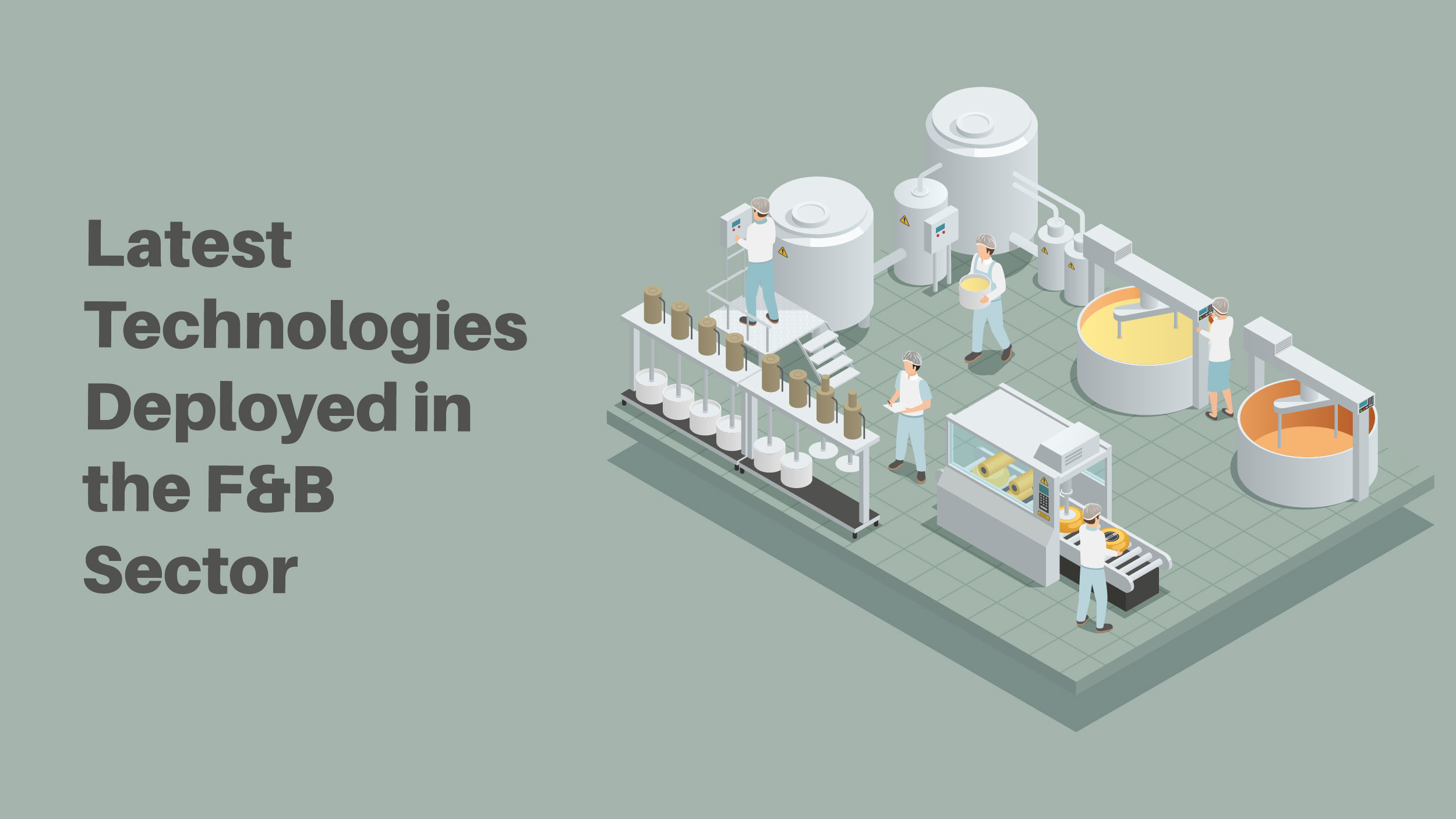
New technologies are continually being developed to enhance productivity, sustainability, and consumer experience in the F&B industry. Here are a few of the most recent innovations in the food and beverage industry:
1. Artificial Intelligence (AI)
AI is being utilized in the food and beverage industry to enhance a number of tasks, such as:
- Product development: By using AI to analyze data and spot patterns, food companies may create new items that satisfy consumer demand.
- Quality Control: Artificial intelligence (AI) can be used to monitor food production and spot potential issues. This can help ensure that food products are secure and uphold the required standards of quality.
- Customer service: AI can be used to assist customers, respond to their inquiries, and offer solutions. This could contribute to enhancing customer experience.
2. Internet of Things (IoT)
IoT is being utilized to link systems and equipment used in food production. This has enabled food companies to gather information and monitor the progress of their operations in real time. This information can be used to increase productivity, spot issues, and make more informed decisions.
3. Blockchain
Tracking the movement of food products from farm to fork via blockchain is safe and transparent. Blockchain technology is helping firms enhance food products’ safety and traceability.
4. Augmented Reality
The use of AR is being used to give customers more details about food products. AR can be used, for instance, to show customers how a food product is made or to give them nutritional data.
5. Virtual Reality (VR)
VR is being used to provide customers with immersive experiences. VR can be used, for instance, to let customers “taste” food before they buy it. Also, people can dine in at their choice of restaurants which makes it possible for customers to explore different ways to have their food.
6. 3D Printing
This technology is being utilized extensively to produce food items that are tailored for each consumer. For instance, 3D printing can be utilized to make custom desserts or pizzas. Additionally, 3D printing makes it possible to produce molds quickly, allowing the food industry to form a dough using a hollow container. 3D printing will also help in fast prototyping for the food industry.
In Conclusion
The F&B business has already been significantly impacted by technological developments, and it is safe to conclude that these developments will continue to influence the sector’s future. The possibilities are boundless, ranging from connected devices and smart kitchens to 3D-printed meals. Companies can boost productivity and efficiency while eliminating waste and costs by utilizing these cutting-edge technologies.
However, the F&B sector has a promising future, and in the years to come, we may anticipate more individualized, healthy, and sustainable food options. As consumers increasingly demand greater quality, more variety, and more sustainable food products, technological upgradation will be a gradual process but worth the effort. Therefore, in order to offer customers the finest eating experiences possible, businesses must keep up with these cutting-edge trends.
